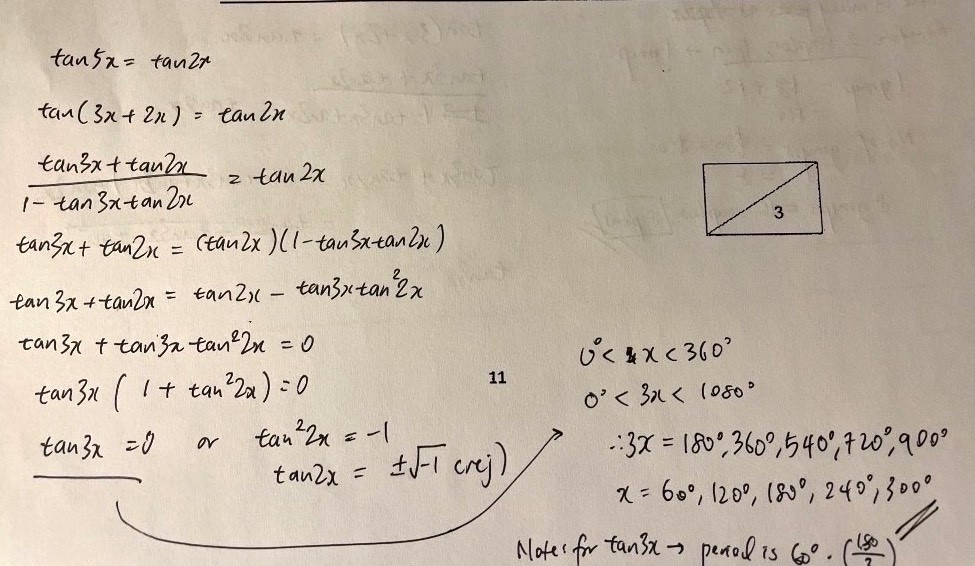Willie's answer to Yang li shuang's Secondary 4 A Maths Singapore question.
Thanks i got it. But just a question though, from the equation that you got:
tan3x + tan3x(tan2x)^2 = 0
Therefore, tan3x = -tan3x(tan2x)^2
so why cant I divide both sides by tan 3x here.
tan3x + tan3x(tan2x)^2 = 0
Therefore, tan3x = -tan3x(tan2x)^2
so why cant I divide both sides by tan 3x here.
Because you will lose solutions arising from tan 3x = 0.
It’s a typical type of idea which applies to questions like
x^2 = 5x
x = 0 and x = 5 satisfy this equation, but if we divide both sides by x, we only get the solution x = 5.
In other words, a correct approach is to first bring it over into x^2 - 5x = 0 before factorising it into x (x - 5) = 0.
In the other approach, the solution x = 0 is lost in the transition because we “divided a solution away”.
It’s a typical type of idea which applies to questions like
x^2 = 5x
x = 0 and x = 5 satisfy this equation, but if we divide both sides by x, we only get the solution x = 5.
In other words, a correct approach is to first bring it over into x^2 - 5x = 0 before factorising it into x (x - 5) = 0.
In the other approach, the solution x = 0 is lost in the transition because we “divided a solution away”.
Got it, Thanks!



